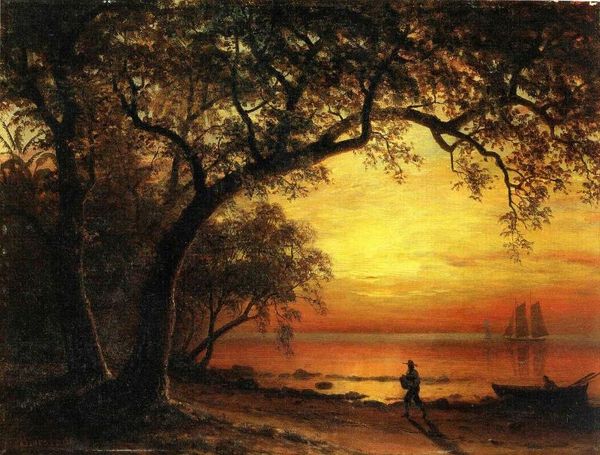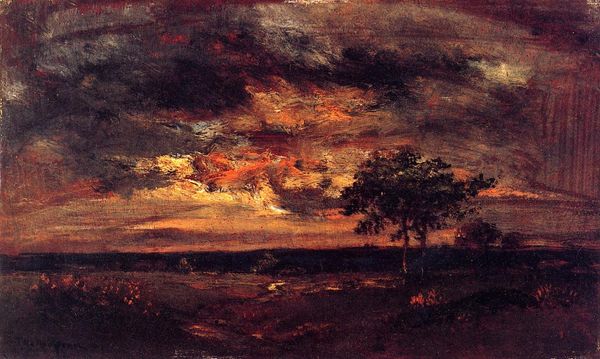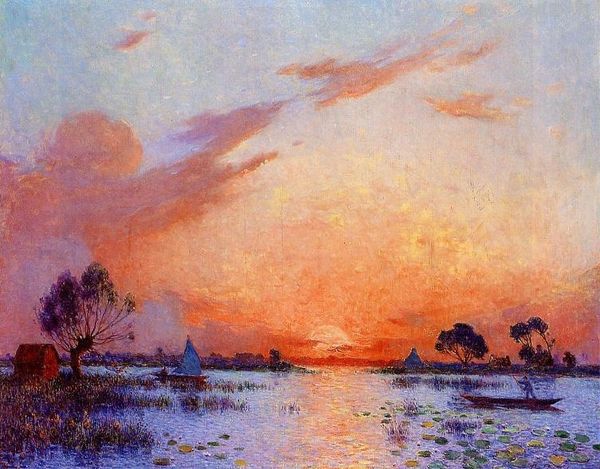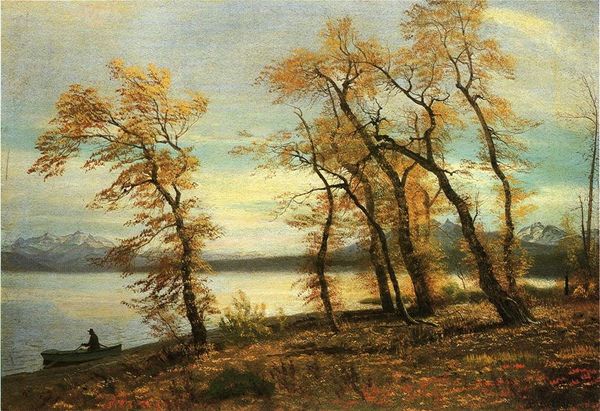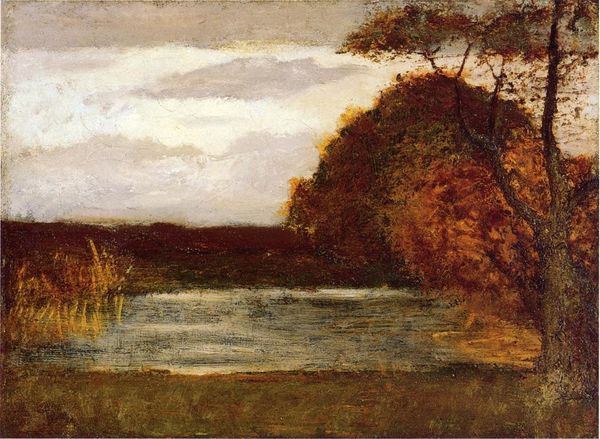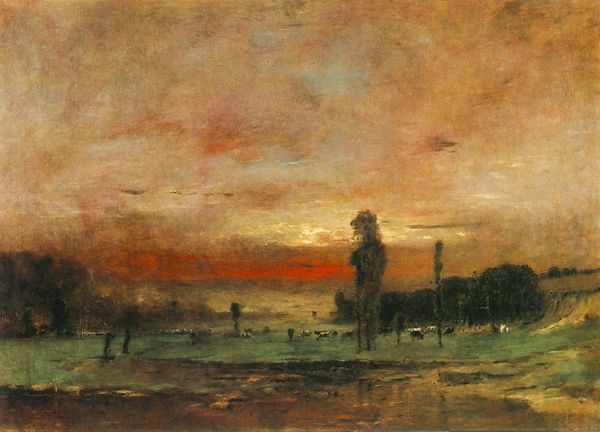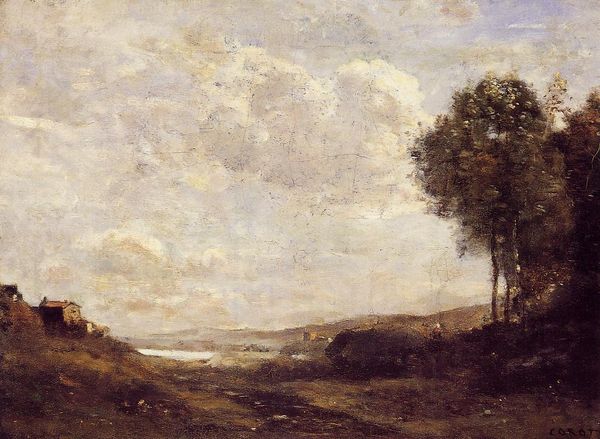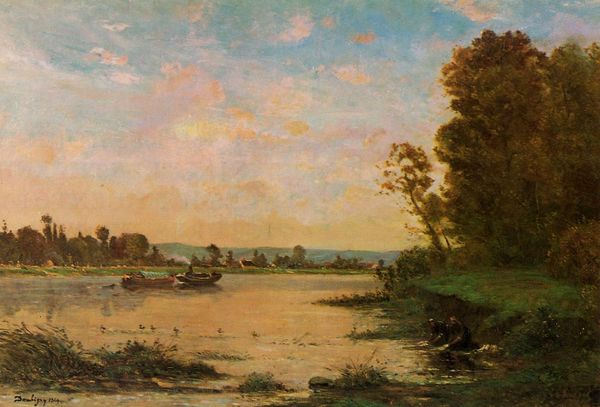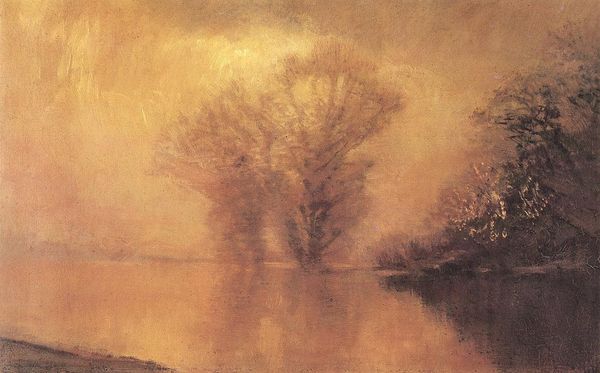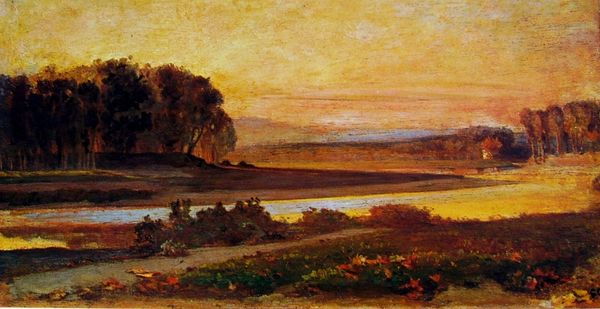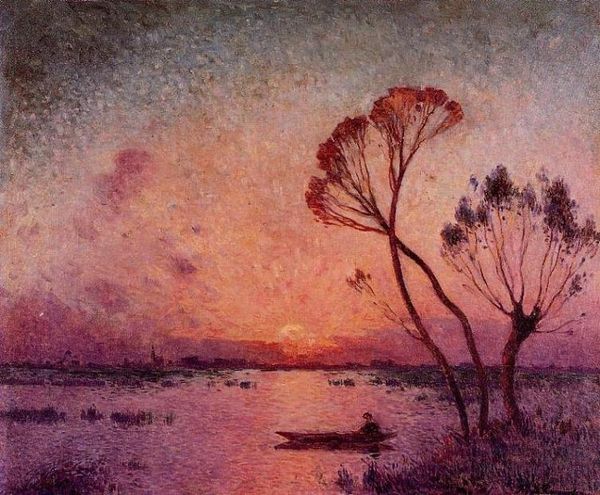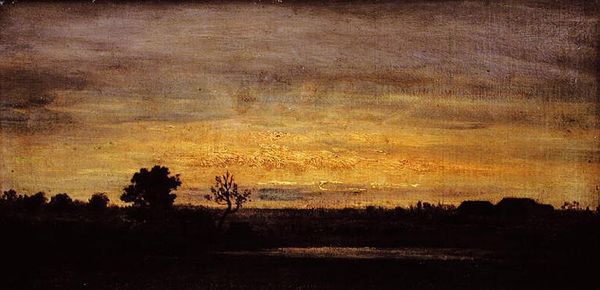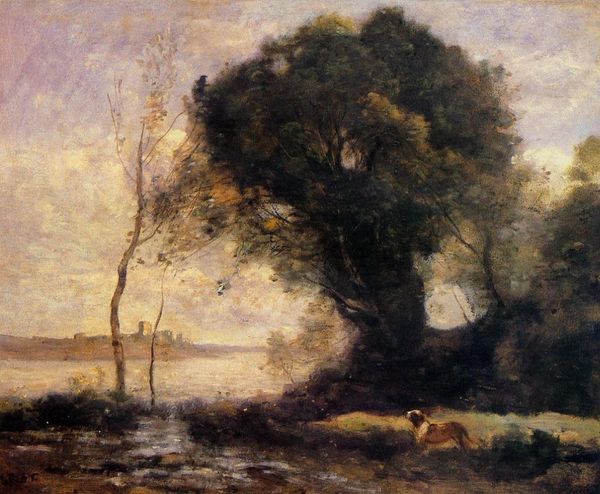
Copyright: Public domain
Curator: Looking at this, I feel enveloped in warmth and a quiet melancholy. It's a truly beautiful piece. Editor: Yes, there's something undeniably captivating about it. What we are seeing is Ferdinand du Puigaudeau’s "Sunset in Brière III" created in 1926, an oil painting that invites contemplation. The golden and reddish tones evoke a powerful sense of solitude. The single figure in the boat somehow grounds it, gives it a focal point. Curator: The date situates it nicely within a period where artists were actively grappling with representing subjective experiences. You know, post-World War I, there was a shift in consciousness, a seeking of solace in nature and the sublime. One wonders if Puigaudeau intended this tranquil sunset to be a response to the anxieties of his time. Editor: Absolutely, the choice to portray the Brière region—a marshland in France, known for its unique landscapes—frames the work in several fascinating ways. Marshlands are neither land nor water, echoing in-between states of identity that are often marginalized, such as displaced or unacknowledged communities that existed in France at the time. Curator: That's insightful. I see his Impressionistic style as not merely a technique but a way of embracing the ephemeral and the personal. There's something quite radical about turning away from academic subjects and toward scenes like this. The politics of imagery. Editor: Precisely, the lack of grandeur also encourages us to consider whose stories are being told. By situating marginalized spaces in opposition to typically lauded landscapes and grand historical painting, artists invite consideration into whose vision of reality becomes our culture. Curator: It’s a wonderful paradox how the intense colour evokes a subtle sense of place and time. In the face of industrialisation, he memorialized, not great events, but simple encounters. Editor: And to take it a step further, the artist has allowed light to dominate the image and tell its story of transition. It evokes more profound themes surrounding cyclical existence. Curator: "Sunset in Brière III" truly allows the viewer to confront a brief moment, both sublime and melancholy. Editor: Indeed, I’m particularly struck by its power to invite conversation about landscape, light, identity, and subjectivity and to create a lasting and contemplative viewing experience.
Comments
No comments
Be the first to comment and join the conversation on the ultimate creative platform.
